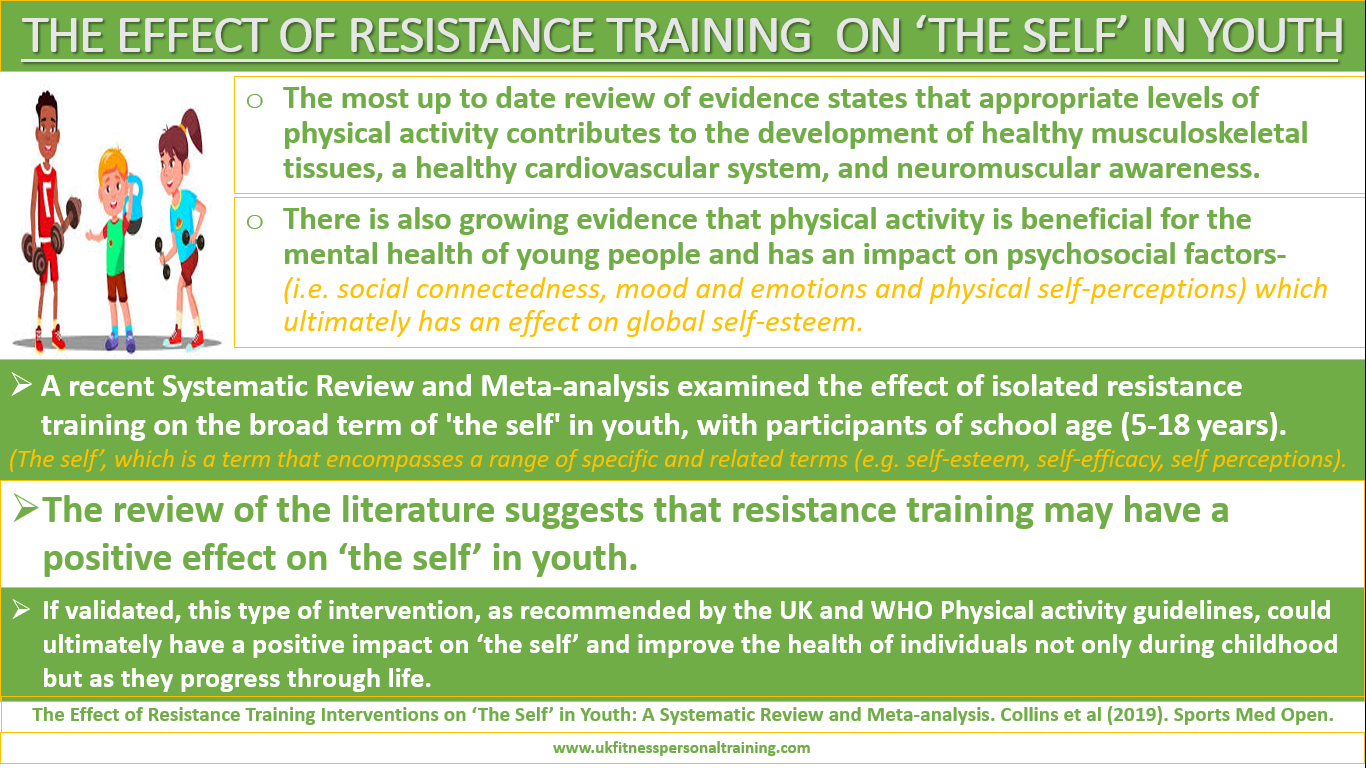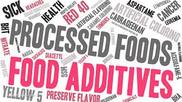 As people take an interest in health and nutrition, stories regarding this topic are prime targets for over sensationalised headlines and reporting from the media. We tend to see lots of publicity about superfoods that can cure and fix your health- or at the other end of the scale scaremongering stories about certain foods, food group or macronutrient “it can kill you”, “it can cause cancer” etc. This kind of journalistic approach generates false hopes and unwarranted fears among many. Sensationalism is defined as a discourse strategy of ‘packaging’ information in news headlines so that news items are presented as more interesting, extraordinary, and relevant. Often exaggerated claims are made about research findings that have not been interpreted appropriately by the journalist or lazy simplistic interpretations of the data are presented. What tends to happen is when the findings are reported in a sensational way it results in a media frenzy, leading to people clicking on the article or buying the paper or magazine. There is pressure for journalist to hit deadlines, not to be the last out with the headline. We also have the problem of certain people and organisations cherry picking studies to suit a personal bias. These people or individuals will tend to hone in on one specific study or part of a study and use it to confirm their biases and support their own position and disregard evidence which does not support it. There is the danger of one study getting put out into the public and it causes a stir. People believe this one study as fact. What we must remember one study is not conclusive proof. One study will add to the data from other studies already completed. It is also important to look at the strength and limitations of the study and corelate this with the results found. There is a hierarchy of evidence which can help decide on priorities when searching for studies. At the top of the pyramid is the highest level for evidence. Meta-analysis, Systematic Reviews, then Randomized Controlled Trials. The base of the pyramid provides the least strength of evidence- animal studies and in vitro studies, then we have case reports, opinions and letters. 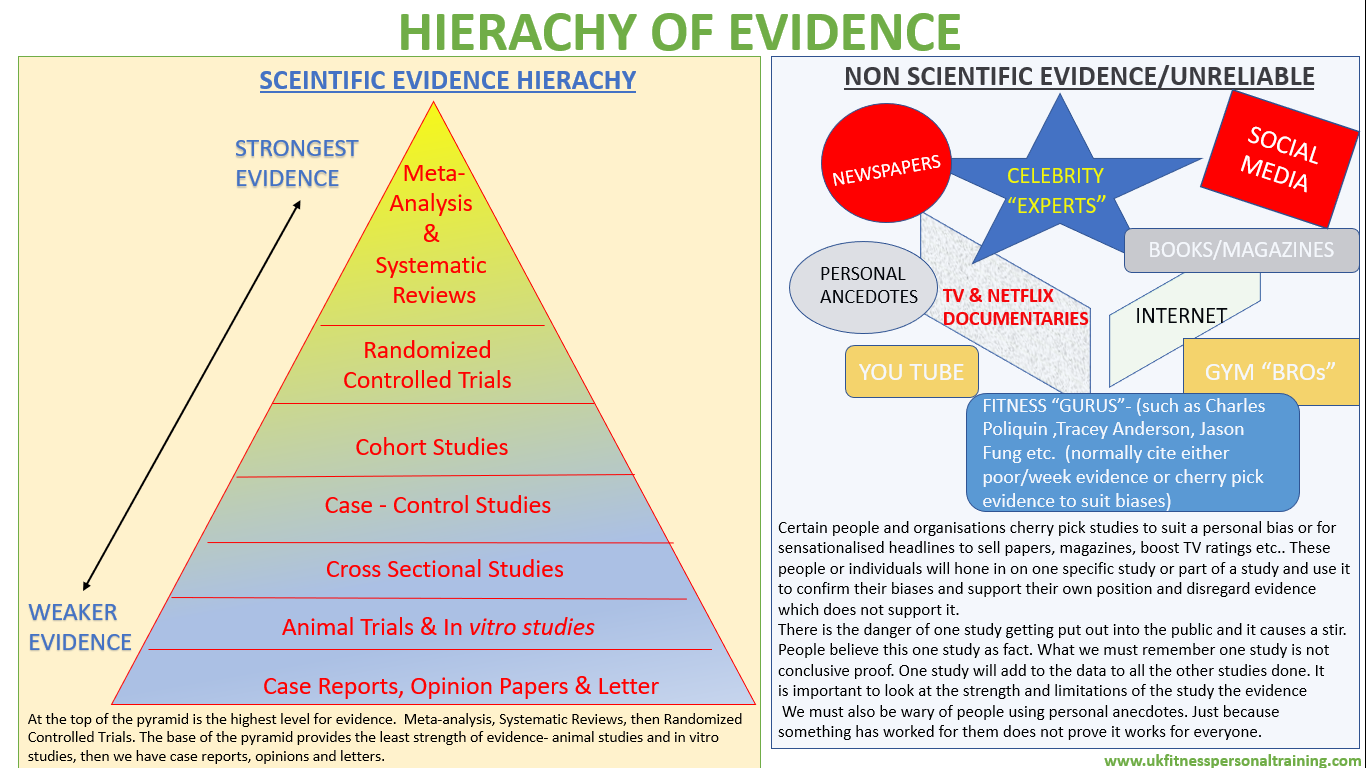 We will have seen such examples of sensationalised headlines such as “High Protein Diets as Dangerous as Smoking” “How to Lose Weight- Drink Plenty of Red Wine” “A sweetener used in chocolate, cakes and fizzy drinks is the deadliest sugar, scientists warn”. One example of potentially irresponsible, sensationalised, distorted journalistic report than can generate both false hopes and unwarranted fears by the Daily Mail. “A sweetener used in chocolate, cakes and fizzy drinks is the deadliest sugar, scientists warn”. The article then goes on to say “Fructose, commonly used in the food industry, becomes damaging when artificially added to other food and drinks. Scientists say the type of sugar, not just the amount of it, can be unhealthy. It is neutralised when present in fruit and vegetables - but turns rogue when imported into other products. And experts say this raises the risk of obesity, diabetes, heart disease and stroke in the process. Scientists at the University of Barcelona conducted a specialised study on rats using two different types of simple sugar.” This is taken by one study done on rats. The problem with animal studies is generalisability when applying the findings to humans. What this more likely means there maybe a link and more investigation needs to be done. If we look at the wider data a recent Meta- Analysis reported on Fructose. - “The highest level of evidence from systematic reviews and meta-analyses of controlled trials has not shown that fructose-containing sugars behave any differently from other forms of digestible carbohydrates. Fructose-containing sugars can only lead to weight gain and other unintended harms on cardio metabolic risk factors insofar as the excess calories they provide. In fact, sugar-sweetened beverages are a marker of an unhealthy lifestyle and their drinkers consume more calories, exercise less, smoke more and have a poor dietary pattern. The potential for overconsumption of sugars in the form of sugary foods and drinks makes targeting sugars, as a source of excess calories, a prudent strategy. However, sugar content should not be the sole determinant of a healthy diet. There are many other factors in the diet—some providing excess calories while others provide beneficial nutrients. Rather than just focusing on one energy source, we should consider the whole diet for health benefits”. Stories like this from the media can become a problem, as it has the potential to label certain foods or food groups as “good or bad”. This leads to confusion and fearmongering. One food group or macro nutrient is not the sole determinant of a healthy diet. There are so many factors that come into play. We must be careful of the stories we see in the media. Often the stories are over simplified or sensationalised. There is also a massive problem in the fitness industry of people cherry picking data to suit their own biases or agenda and presenting poor studies or twisting data to suit. It can be a misleading to take one food or food group and demonise it regarding health links as there can be so may other factors that come into play. Correlation does not equal causation. There can be so many factors involved. High processed meat and/or high sugar intake can be a marker of an unhealthy lifestyle and their consumption can lead to higher calorie intake, people may be less inclined to exercise, smoke more or generally have a poor dietary pattern. Eating a hotdog is not as dangerous as smoking and fructose is not the most dangerous sugar regardless as what the headline makers say. We also have so many diet plans being advertised, that all make competing claims about which one is best. It is easy to get confused as they will often cite "week" evidence and bamboozle us with all sorts of pseudoscience about their diet often to sell books, magazines or just to prove their own personal biases. For example, we have some proclaiming “low carb” is best for health and weight loss or other who claim “low fat” is best. What tends to happen is whoever is selling the diet plan/book etc. will cherry pick the data to support their own position on which is best. A meta-analysis of Comparison of weight loss among named diet programs in overweight and obese adults, to determine weight loss out comes for popular diets based on diet class (macronutrient composition) and named diet. It concluded that "significant weight loss was observed with any low-carbohydrate or low-fat diet. Weight loss differences between individual named diets were small." It supported the practice of recommending any diet that will be adhered to lose weight. The study by Johnstone et al tells us there that the carb/fat component of the diet won't make much of a difference when it comes to weight loss. Basically, saying that there is no need for a one-size-fits-all approach to dieting, regardless of what many commercial diets/books/gurus proclaim, because many different diets appear to offer considerable weight loss benefits. We have to watch out for the biases or miss-interpretation of reporting. If you were to believe everything that was reported in the media or what some of the so called experts tell us there would not be a lot left for us to eat! There are those who tell us
Watch out for any biases or misreporting of in the studies reported and the strength of the evidence. Many people have an agenda or their own personal biases. They maybe trying to sell diets, books, trying to generate click bait, or even just making out they hold the key to nutrition and health success. See beyond the headlines- science is not just about one study. A study is done and will be added to the mass of data. Be wary of sensationalist reporting and extravagant claims and interpretations about research findings. These types of headlines generate a lot of unwarranted fears and can also give false hope. When seeing those types of headlines , it would be good if more people displayed some critical thinking and not just blindly believe it as gospel. Look where the data has come from, the quality of the study design, who is reporting the study, and do they have an agenda. Table 1. Hierarchy of Evidence- Terms 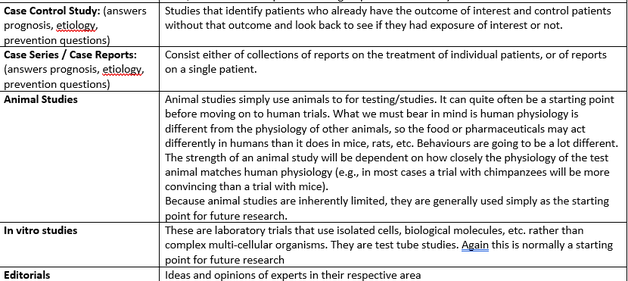 References
Jamie Miller-,Personal Trainer UK Fitness Personal Training Aberdeen Fitness, Nutrition & Personal Training
1 Comment
|
AuthorJamie Miller Categories
All
Archives
March 2021
|
LocationUK Fitness Personal Training
Personal Training Aberdeen
Aberdeen Fitness & Combat Centre.
Unit 1B, Berryden Retail Park Aberdeen AB25 3SA Can't come to Aberdeen to train 1-1?
Why not try online personal training? |
|
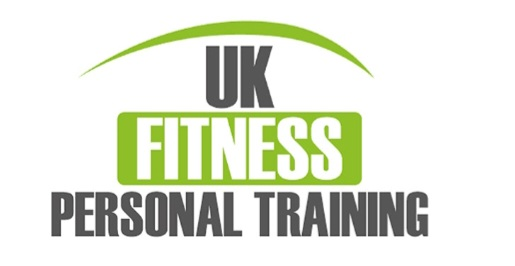
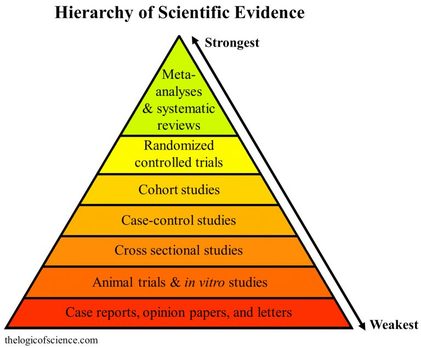
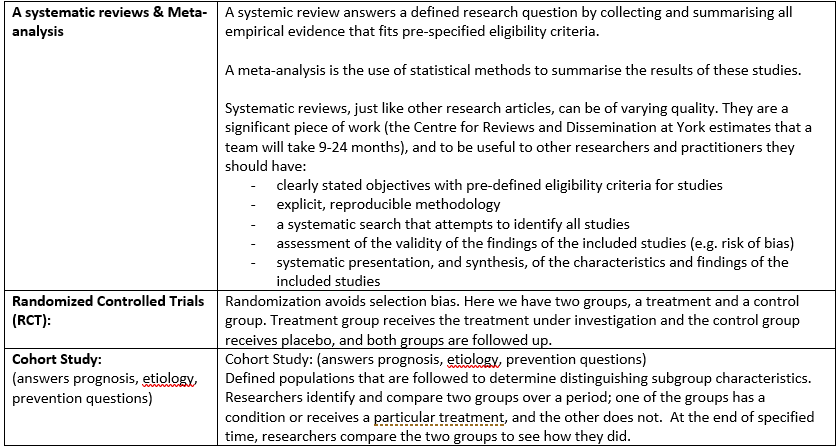
 RSS Feed
RSS Feed

